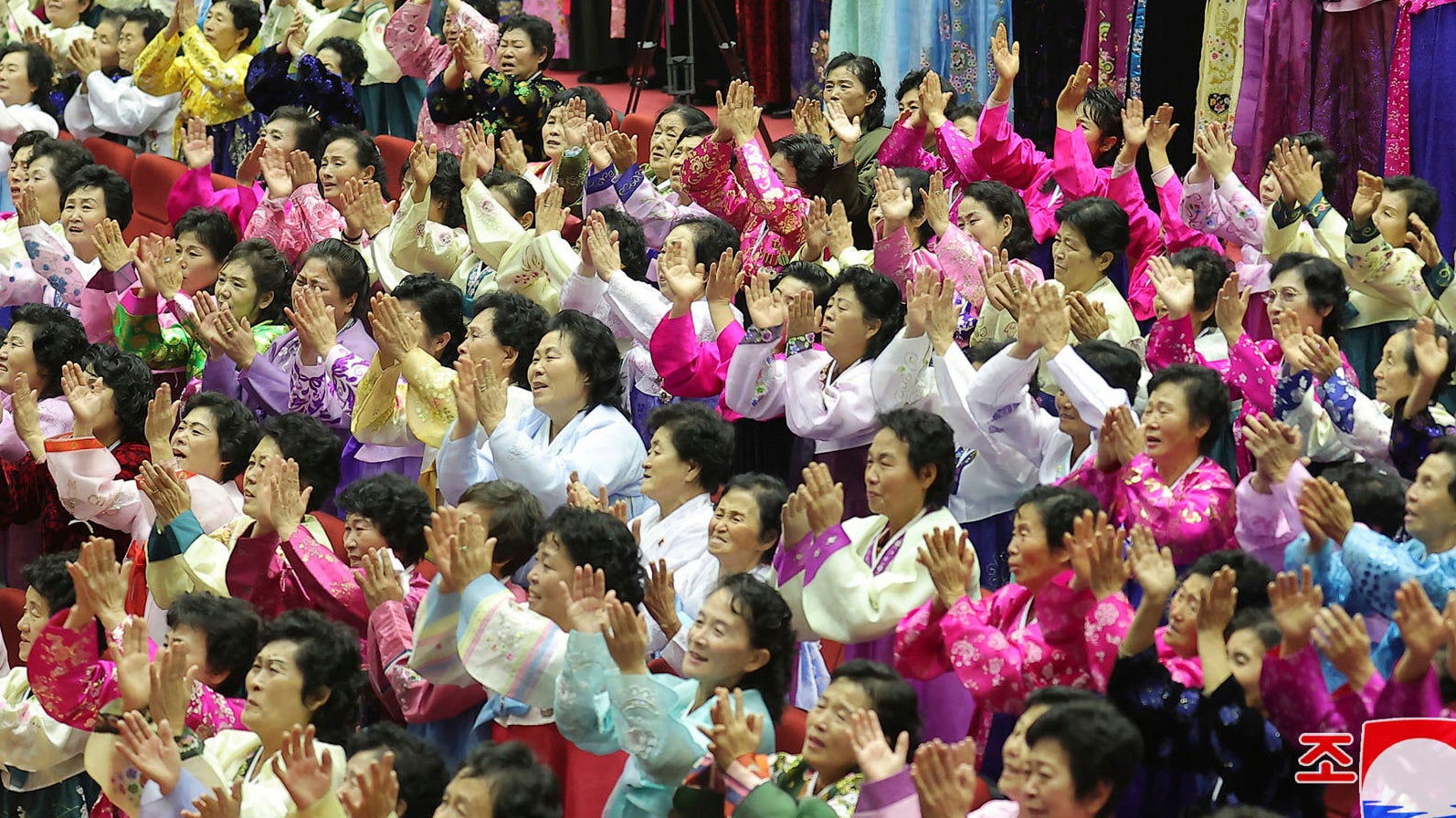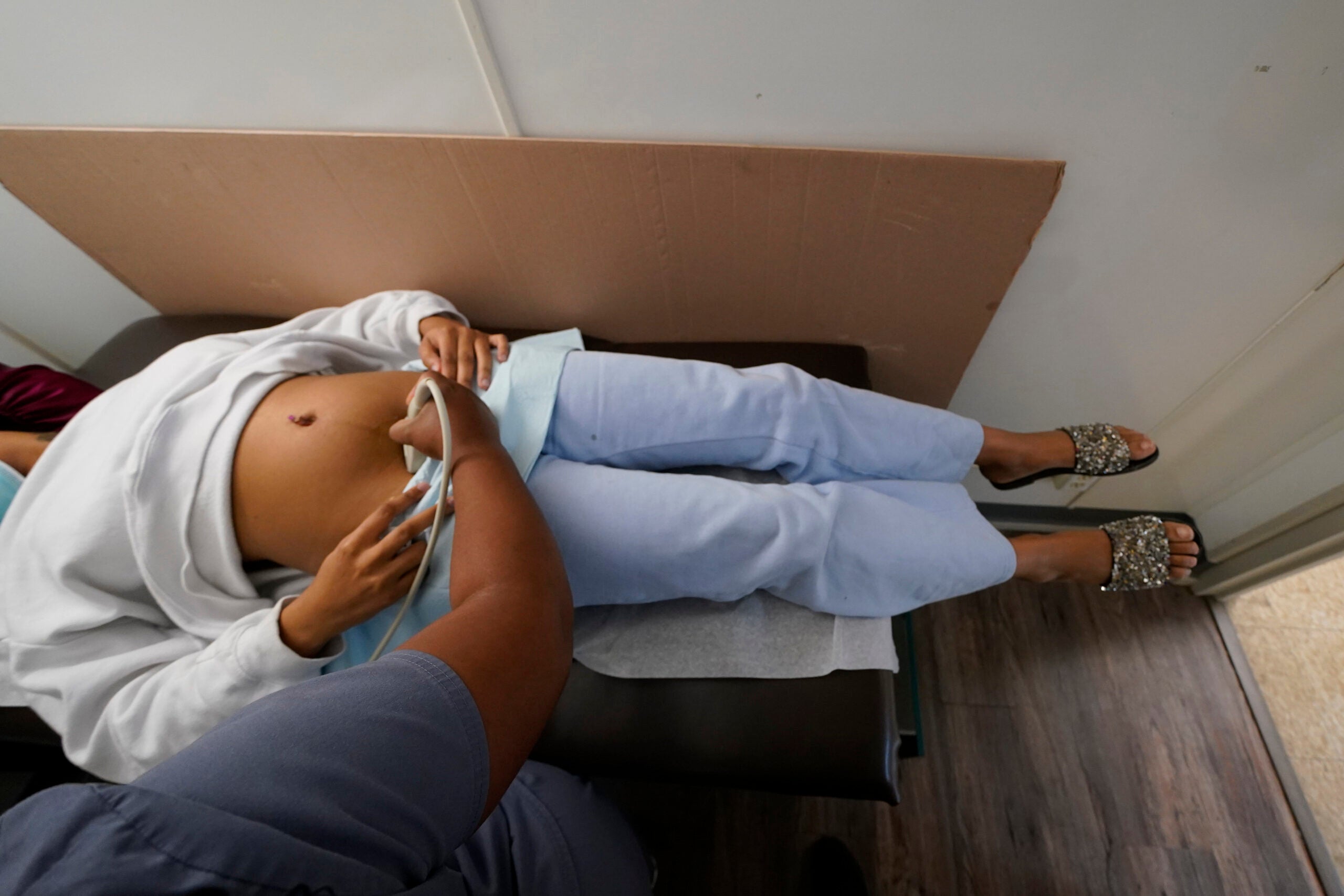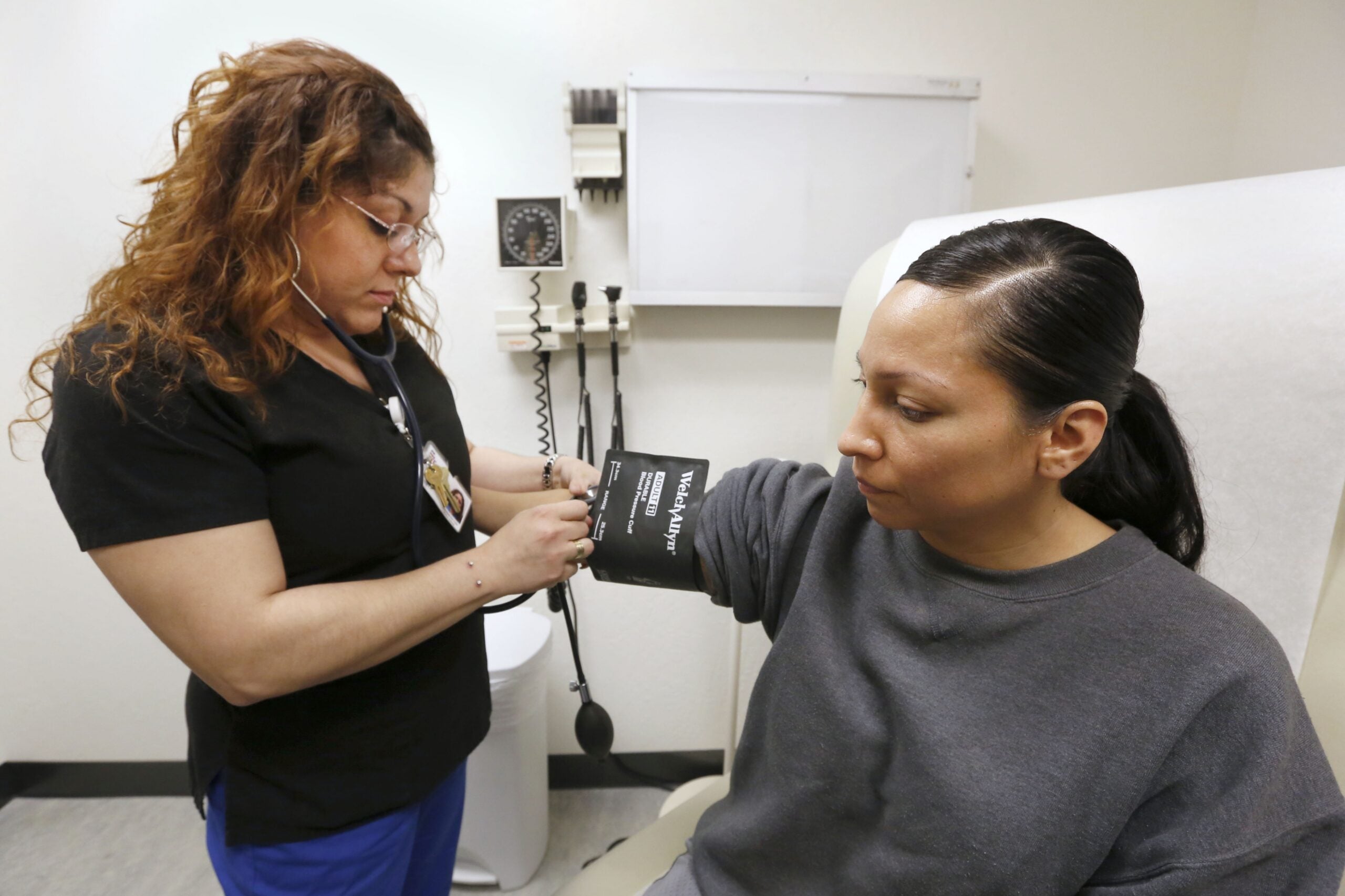SEOUL, South Korea – Last week, an unusual array of vivid colors filled the seats at a North Korean political event. The all-woman audience and their traditional Korean dresses were a rare departure from the dull-colored suits and uniforms of typically male-dominant crowds on such occasions.
The event, the 5th National Meeting of Mothers, was the first to be held since 2012 and the first to be attended by the country’s leader since 1961, according to South Korea’s Unification Ministry.
Leader Kim Jong Un’s presence on both days of the two-day gathering and his two speeches there implied the North Korean government had important messages to deliver.
Stay informed on the latest news
Sign up for WPR’s email newsletter.
That mothers should contribute to “stopping the declining birth rate” was among them.
It was the first time Kim publicly acknowledged the problem, the Unification Ministry said. But population control has long been an essential task for the country with labor-intensive military and economic sectors and a perpetual lack of resources.
Research suggests the current birth rate of North Korea is a result of both the success and failure of the country’s economic policies, which set the country ahead of other developing nations at first, but ultimately failed on its promises.
According to United Nations’ assessments, the average North Korean woman has 1.79 children over her lifetime, a rate that falls short of 2.1 needed to maintain the population.
Many countries struggle with declining birth rates, including South Korea, which currently has the world’s lowest rate of 0.78. But the challenge is primarily one that developed countries face. That North Korea, one of the world’s poorest economies, also is facing a declining population makes its case an outlier.
In 2022, North Korea’s gross national income per capita was about 1,100 U.S. dollars, according to estimates by South Korea’s central bank. That’s approximately 3.4% of South Korea’s per capita income.
International organizations categorize North Korea as one of the lowest-earning countries, together with Syria, Afghanistan, and many sub-Saharan African countries.
Yet it has a birth rate comparable to countries with upper-middle income, such as China and Mexico.
According to a study by the South Korean government think tank Korea Institute for National Unification (KINU), North Korea’s birth rate already fell behind upper-middle income countries before 1970 and continued to drop, stabilizing near the current level in the 1990s.
The research attributes the exceptional phenomenon to policies implemented in the early decades of the country out of the need to enlist as many workers as possible, including women. Coming out of the 1950-53 Korean War, North Korea struggled with scarce resources and aspired to outproduce the U.S.-backed rival South Korea.
Government policies, a severe food shortage, push women into new roles
North Korea introduced universal education much earlier than other developing nations, according to the study, and encouraged young people to marry late. Concerned that a growing population would burden its economy – the total fertility rate neared 4 by then –the country also made contraception and abortion available in the 1970s.
As a result, compared to other low-income countries, North Korea has had lower maternal mortality rates, a lower adolescent fertility rate, a higher age of women at their first marriage, and higher adult literacy. Almost all young women received secondary education by the 1960s.
Beginning in the early 1990s, however, as the fertility rate dropped to around 2, North Korea started encouraging its citizens to have more children. The government banned abortion and offered subsidies and other benefits to families with three or more children.
But a severe food crisis from the mid-1990s, which followed the Soviet Union’s collapse, thwarted this policy shift and cemented the declining birth rate.
Government rations dried up, and as many as millions of people are estimated to have died from starvation.
Women started seeking survival through unofficial economic activities amid growing marketization to support their families in place of men, who were “forced into unpaid labor by the government,” says Hyun In-ae, a non-resident research fellow at Ewha Women’s University’s Institute for Unification Studies in Seoul and who defected from North Korea in 2004.
Despite the North Korean government’s claim of gender equality, traditional gender roles and a hierarchical division of labor based on gender persists. That allowed women to be relatively free to leave government-assigned workplaces.
“With the government welfare system all collapsed, women became the sole breadwinner of their family,” Hyun says. “Having a child meant that they can’t work and the whole family has to starve.”
“In the 80s, every family would have two children. But since the Arduous March, that changed to just one,” she adds, referring to the North Korean expression for the widespread famine.
A new role for women begins to change North Korean social norms
As women adjusted to the double burden of traditional roles and the new job of breadwinner, so did social norms about marriage and family. And the changes stayed even as the country partially recovered from the crisis. According to defectors and reports from inside North Korea, young people now delay marriage and prioritize access to wealth, rather than to power, when looking for a spouse.
In a 2014 survey of 54 North Korean defectors born between 1989 and 1994, by the Institute for Far Eastern Studies in Seoul, more than a third of respondents said that while in North Korea, they thought economic conditions had to be met to get married or that they did not plan to get married at all.
In the same survey, a majority said that women started having a stronger voice in their households while men’s power dwindled.
Changing perceptions in individual households mirrored the dissolution of the concept of “great socialist family,” whereby North Korea regards the whole nation as one family, the leader as the “great father,” the ruling Workers’ Party of Korea as the mother, and the people the children.
“Before, when a mother raised a child, she was serving not just her family but the entire nation. But the ties to the government have become thinner and thinner,” says Cho Jeong-ah, a senior research fellow at KINU.
“The state can no longer provide for the people” as the patriarch of the “great socialist family,” she says, adding that it’s women who are now playing the role of the provider.
But unable to transform the economic reality or recognize women’s new roles, Cho says Kim Jong Un has relied on the obsolete idea to boost the country’s birth rate, creating Mother’s Day in 2012 and calling mothers with many children “heroines.”
At the National Meeting of Mothers last week, he praised mothers for being “admirable assistants and faithful servants to their husbands and children” and said their “jewel-like patriotic mind and precious sweat shine in the bright laughter and happy tears of the great socialist family.”
Ewha University’s Hyun In-ae says rhetoric alone will fail to convince women to have more children and that shrinking labor force would further depress North Korea’s economic growth.
South Korea’s Unification Minister Kim Yung-ho said at a press conference on Tuesday that North Korea’s birth rate decline “appears to be related to younger generation’s changing perceptions” and “will likely affect the country’s military and economy.”
9(MDAyMjQ1NTA4MDEyMjU5MTk3OTdlZmMzMQ004))
© Copyright 2025 by NPR. To see more, visit https://www.npr.org.9(MDAyMjQ1NTA4MDEyMjU5MTk3OTdlZmMzMQ004))





